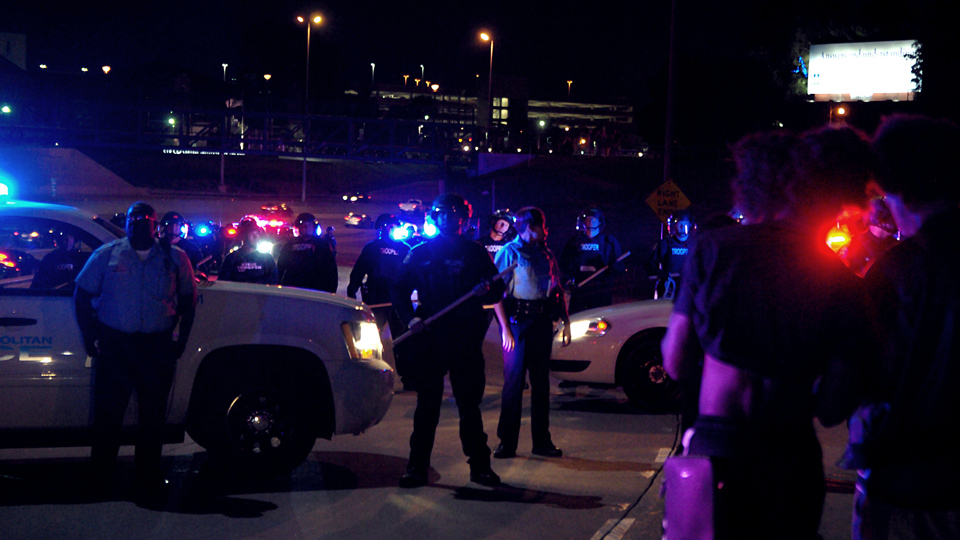
ST. LOUIS — The outrage in this city against the acquittal of ex-St. Louis cop Jason Stockley, charged with first-degree murder in the 2011 killing of Anthony Smith, a 24-year-old African-American man, has not subsided. And after some 40 days of protest, the public’s cries for justice continue to fall upon deaf ears accustomed to the status quo.
Police claim to “own the night”—stealing the catchy title of the 2009 crime drama, We Own the Night. The St. Louis Board of Aldermen is locked in a procedural battle—over whether to recognize the victims of police brutality or the police for their public service—as the city crumbles and violence against citizen activists increases with each demonstration. Mayor Lyda Krewson originally went AWOL after canceling her pre-arranged town halls, then reappeared at a forum discussing public policy issues facing the community and police at Harris Stowe University. She was shut down by constituents exhausted with her inaction. And the mass arrest of over 143 people the night of October 4 only received national attention because credentialed journalists were among those detained.
Welcome to our city, where the death of democracy is taking place.
“Everyone sit down on the ground! You’re all under arrest!” demanded a faceless, uniformed bike cop. Several hundred demonstrators were peacefully crowding together on the sidewalk. They had moved there quickly, once the order to “clear the street” was bull-horned at them. As demonstrators began leaving, riot cops surrounded them on all sides—no one was leaving, it was another “kettle.”
At the ends of each riot line were officers’ trigger fingers itching to use their bottles of pepper-spray—face shields were pulled down, bandannas were tied up and around countless faces.
I turned to look around and then walked over towards my colleague Daniel, a freelance photojournalist, as police came up behind us while we sat on the ground.
“Well, it looks like we’re going to jail tonight,” he said. “At least we’re not going in alone.” Three other journalists went with us.
But this is not about us.
The time journalists spent locked up should not be compared to the brutality facing African Americans, the LGBTQIA community, the disabled community, and countless other oppressed classes daily. Local elected officials gamble with their lives, while law enforcement regularly violates their civil rights.
The highway takeover
Several hundred St. Louisans rode five exits up on Interstate 64 earlier that evening before jumping out of cars and taking over all traffic lanes. Their designated drivers formed a caravan behind them, slowing down oncoming vehicles, adding a much-needed safety measure.
“That was a good idea,” I thought, while photographing the march. After the tragic chaos in Charlottesville, it seemed that emboldened, right-wing drivers would rather attempt vehicular manslaughter than wait patiently for others to exercise their First Amendment rights—truly an American hypocrisy.
Carrying banners and signs and chanting, “If we don’t get no justice, then they don’t get no peace!” activists peacefully marched arm in arm. Onlookers watched from the overpass as protesters marched underneath them, followed by blue and red flashing lights.
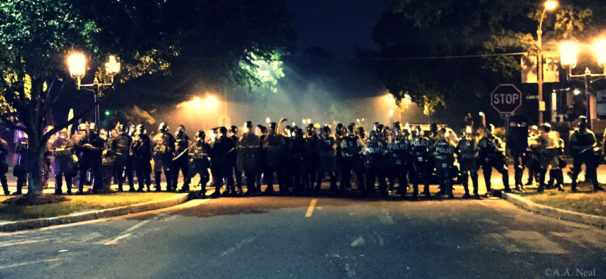
Two city buses filled with riot cops were on-scene, parked along the edge of an interstate feeder road, waiting for the demonstration to become an “unlawful assembly.”
Taking the Compton Street exit, demonstrators left the interstate and continued marching towards the downtown area. Their destination: St. Louis Metropolitan Police Headquarters.
No one made it that far.
At the intersection of Market St. and Compton Ave., at 8:45 p.m., the mass arrest took place. Riot cops began picking protestors off at random, zip-tied them, photographed them, and loaded everyone into one of several prisoner vans.
It was a short 10-minute ride to the St. Louis City Justice Center, the city’s euphemism for its jail.
Inside city jail
“We need medical in here!” clank…clank…clank… “Hey! someone has a medical emergency in here!” clank…clank…clank… “Can we please get fucking medical in here?!”
Medical never showed up. I listened to the pleading and kicking coming from the holding cell next to ours and watched as police and jail staff looked in, walked by, and did nothing. I never found out if that person got help.
Depending on the cell you were in and the officer assigned to it, you either spent the first several hours with your hands still zip-tied behind your back or, if you were lucky, had the ties clipped off. It was a random decision left up to the individual officer.
With so many people arrested, initial processing took longer than usual. It was 1:45 a.m. before they got to our cell. After turning in all possessions and signing off on the property bags, we were moved to the basement holding area for a medical check with the nurse—whom no one saw.
As we sprawled out on the floor, underneath the metal benches, by the toilet and door, there was nothing to do but wait.
Close to ten hours went by before we were given clean drinking water. During that time, more medical help was requested but never came.
There were activists with a range of health issues—cancer, diabetes, and severe depression to name a few—with some desperately needing their medication to prevent serious health risks. But none of that mattered. Jail staff made it clear—with their jeers, scowls, and taunts—that everyone locked up was just an inconvenience to them and not worth the overtime pay.
The usual: “It must be easy to protest when you don’t work for a living.” Or “I’m sorry… are you offended, snowflake?”
At one point during our stay, the blood sugar of one of the detained, “Joe,” dropped dangerously low. After yelling and pounding on the door for twenty minutes, a correctional officer finally peeked in.
“Hey, he needs to get some food. He’s diabetic,” someone said.
The officer looked around and responded, “Well, I can take you to get your sugar-level count, but you’re not going to get any food.”
They left and came back shortly, but nothing was actually done to help.
Outside the jail, pro-bono attorneys and jail support volunteers worked all through the night tracking arrest statuses and bond amounts, contacting friends and family, and setting up camp outside the jail.
Activists started getting processed out right around Wednesday morning shift change.
As they walked out the door, they were greeted by several dozen activists cheering and offering fresh food—a step up from the sugar water and rotten food offered inside. Hot coffee and legal aid were waiting—a hero’s welcome for those fighting injustice.
In the end, it was truly an awful experience.
And I can only assume that those 143 arrests would have gone unnoticed if not for the handful of journalists picked up too.
While we can applaud the October 4 coverage and the cries of outrage from the journalism community, we should also ask ourselves: “Why the hell did it take so long to get real coverage?” Peaceful protestors have been getting harassed and arrested from day one—especially Black community activists.
Their struggle should be the story, not ours.


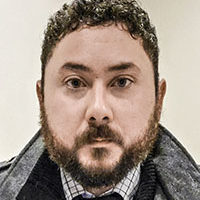
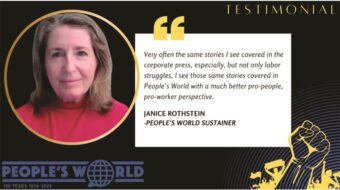

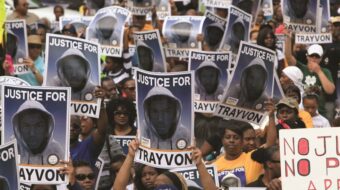






Comments